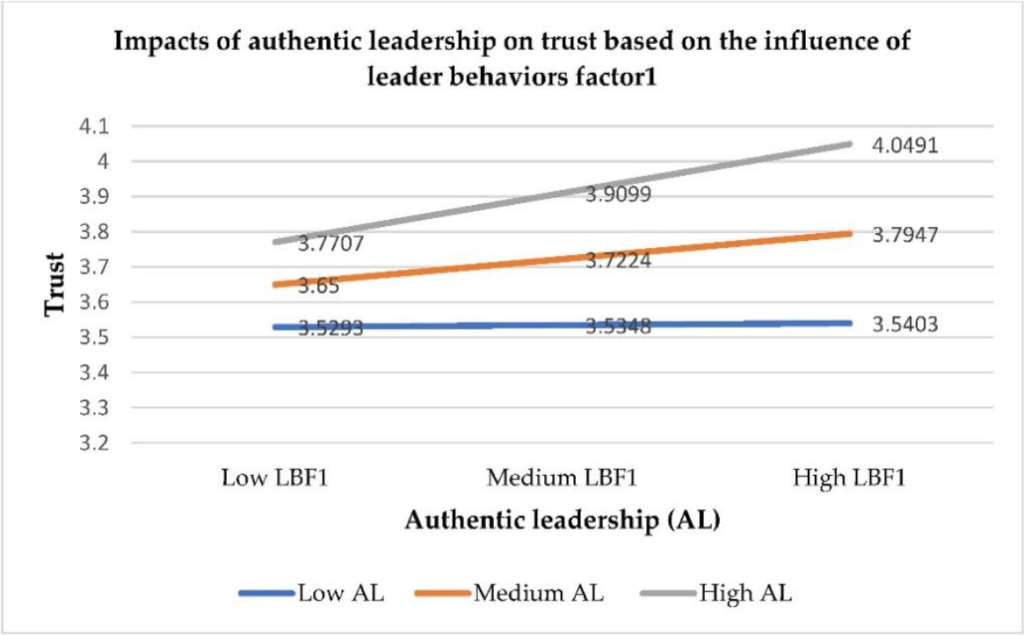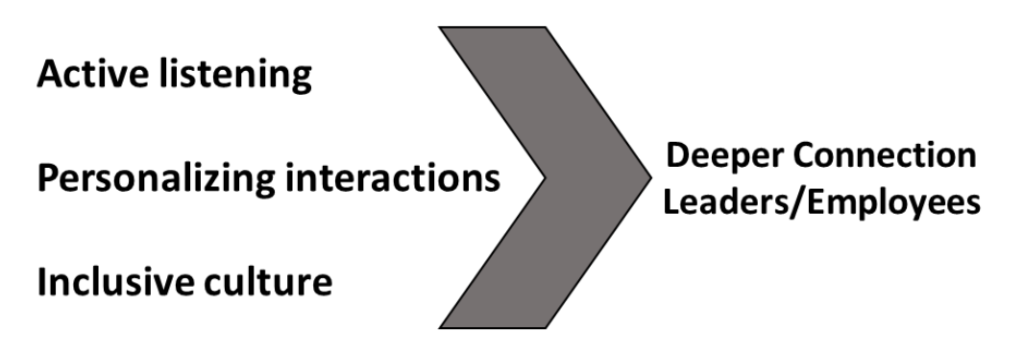By Tony Martignetti
In the dynamic world of corporate leadership, the ability to forge authentic connections has emerged as a crucial determinant of effective management and influence. This evolution marks a departure from traditional, hierarchical models, steering toward a leadership approach where interpersonal relationships are central to organizational success. As an experienced leadership advisor, I have observed the significant impact that authenticity in leadership has on both team dynamics and overall organizational effectiveness. Leaders who excel in building deep, meaningful connections foster collaborative and dynamic work environments crucial in today’s fast-paced business landscape. This article aims to equip C-suite executives and business leaders with an understanding of authentic connections in leadership, exploring their importance and effective strategies for nurturing these bonds to enhance employee engagement and organizational success.
The Power of Authentic Connections in Leadership
Authentic connections in leadership transcend traditional employer-employee dynamics, creating a rapport based on mutual trust and respect. In today’s work culture, where employees seek more than financial rewards, they crave a sense of belonging, recognition, and alignment with their personal and professional values. Authentic leaders are approachable and transparent, cultivating an environment where open communication thrives. This openness not only enhances team cohesion but also fosters a culture of innovation. When employees feel valued, they are more likely to contribute their perspectives. Authentic leaders are self-aware, leading with humility and a commitment to learning alongside their team. This leadership style inspires loyalty and motivation, driving collective success.
The significance of authentic connections in leadership cannot be overstated in the corporate world. Connections, which transcend traditional employer-employee dynamics, lay the foundation for a rapport steeped in mutual trust and respect. In a work culture increasingly driven by values and a search for meaning, employees yearn not just for financial rewards but also for a profound sense of belonging, recognition, and a clear alignment with their personal and professional aspirations. Authentic leaders, known for their approachability and transparency, cultivate a workplace environment where open communication is not just encouraged but flourishes.

Sustainability 2022 by James K. C. Chen and Thitima Sriphon
This ethos of openness serves as a catalyst for enhanced team cohesion and a breeding ground for innovation. In an authentically led environment, employees feel genuinely valued, which in turn encourages them to share their unique perspectives and ideas freely. This diversity of thought is a key driver of innovation and problem-solving within organizations.
Authentic leaders are characterized by a high degree of self-awareness. They lead not from a pedestal but with humility, recognizing their own strengths and limitations. This approach demystifies the leadership role, making these leaders more relatable and accessible to their teams. They are committed to a journey of continuous learning alongside their team members, fostering an environment where professional development and personal growth are intertwined.
These leaders also excel in emotional intelligence, understanding and managing their emotions effectively, and empathizing with those of their team members. They handle workplace conflicts with a level of sensitivity and understanding, fostering a culture where challenges are addressed constructively.
Strategies for Deepening Employee Relationships
Building deeper relationships with employees is a strategic process that demands active listening, personalizing interactions, and fostering an inclusive culture. Active listening involves fully focusing on the speaker, understanding their perspective, responding thoughtfully, and showing employees that their contributions are valued. Personalizing interactions means recognizing the individual strengths and challenges of each team member. Leaders should strive to create an environment where every employee feels valued and part of the organization’s mission, celebrating diversity and embedding inclusivity into the organization’s culture.

Active listening is at the heart of deepening employee relationships. It involves more than just hearing the words spoken; it requires full attention, understanding the underlying message, and responding in a way that validates the speaker’s perspective. This form of listening shows employees that their opinions and concerns are not only heard but also considered important. When leaders actively listen, they gather invaluable insights into their employees’ motivations, challenges, and aspirations, which can guide more effective and empathic leadership decisions.
Personalizing interactions with employees is another vital strategy. Every team member comes with a unique set of skills, experiences, and perspectives. Recognizing and appreciating these individual differences is crucial. Leaders can personalize interactions by offering tailored feedback, celebrating individual achievements, and providing opportunities aligned with each employee’s career goals and interests. This approach not only enhances the employee’s sense of self-worth but also fosters a deep sense of belonging and loyalty to the team and organization.
Creating an inclusive culture is essential for deepening relationships with employees. Inclusivity in the workplace means more than just avoiding discrimination; it’s about creating an environment where diverse voices are actively sought, heard, and respected. An inclusive culture appreciates the differences in backgrounds, perspectives, and experiences and leverages these to enrich the workplace. Leaders can foster inclusivity by encouraging diverse teams to collaborate on projects and ensuring equitable opportunities for growth.
Promoting a culture of feedback is crucial. Encourage and value feedback from employees at all levels. This can be achieved through regular one-on-one meetings, anonymous surveys, or open forums. A culture that values feedback demonstrates a commitment to continuous improvement and shows employees that their opinions can lead to real change within the organization.
Communication Skills: Bridging the Gap
Effective communication is the cornerstone of building authentic connections within any organization. It involves delivering messages clearly, consistently, and with empathy. In the digital age, maintaining authenticity, especially with remote teams, is challenging. Leaders must adeptly use various digital platforms to foster meaningful communication.
Global consulting firms, for example, have successfully leveraged collaborative platforms like Slack and Microsoft Teams to create virtual ‘water cooler’ spaces. These platforms encourage informal interactions, fostering a sense of community among remote teams.

Source: https://www.allwaveav.com/top-6-video-conferencing-platforms-zoom-alternatives-2/
Clear communication is about delivering messages straightforwardly and unambiguously. Consistency in communication builds trust and ensures that employees receive the same message, regardless of their position or level within the organization.
Emotional intelligence plays a pivotal role in effective communication. Leaders must be able to manage their emotions and understand those of their team members. This emotional intelligence is critical in managing conflicts, motivating team members, and nurturing a positive work environment.
Responsiveness in digital communication is also key. With the ability to communicate instantly, employees expect quick responses. Leaders need to be mindful of this and strive to respond in a timely manner, showing respect for the employee’s time and input.
Two-way communication is crucial. Leaders should not only convey information but also actively seek feedback and input from team members. This two-way communication ensures that employees feel valued and that their opinions matter.
Leaders should be aware of the importance of non-verbal communication. Even in a digital context, non-verbal cues like facial expressions and gestures play a significant role. Being conscious of one’s own non-verbal cues and learning to read those of others can enhance understanding and connection.
Measuring the Impact of Authentic Leadership
The impact of authentic leadership can be measured through various metrics, including employee engagement levels, retention rates, and overall productivity. Tools like employee engagement surveys and performance evaluations provide insights into the effectiveness of a leader’s authenticity. Authentic leadership often leads to a stronger employer brand, as evidenced by employees’ willingness to advocate for the organization internally and externally.
Authentic connections are integral to successful leadership. Leaders who prioritize genuine, meaningful interactions with their employees create an environment of trust, open communication, and shared purpose. This article has outlined key strategies for nurturing these connections, emphasizing their importance in contemporary business leadership.
About the Author: Tony Martignetti is a leadership advisor, coach, best-selling author, podcast host, and speaker. He elevates leaders and equips them with the tools to navigate through change and unlock their true potential. Tony is the author of Climbing the Right Mountain and Campfire Lessons for Leaders.
